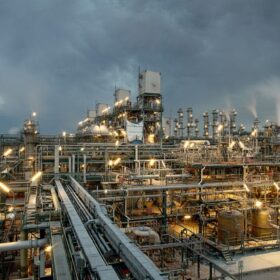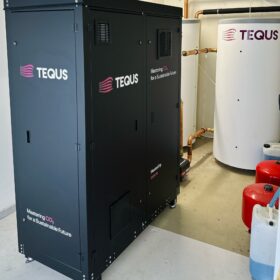Key takeaways from Abu Dhabi’s World Future Energy Summit
The 2024 edition of the Middle East’s most important solar event hosted a higher number of exhibitors and visitors, even though the heaviest rainfall seen in decades hit the United Arab Emirates throughout the first day of the trade show. Nonetheless, the event clearly showed that large-scale PV projects still dominate in the UAE market.
Korean researchers build 8 kW solid oxide electrolysis cell that can produce 5.7 kg of hydrogen per day
The Korea Institute of Energy Research has developed a solid oxide electrolysis cell stack that uses a special kind of separator plate to ensure proper flow of hydrogen and oxigen after water splitting. Samsung Electro-Mechanics and Bumhan Industries are now cooperating with the research center to improve relevant manufacturing process.
OCI increases production capacity at Malaysian polysilicon factory
OCI has revealed plans to invest $617.9 million to expand production at its Malaysian manufacturing facility from 35,000 to 56,600 metric tons.
Solar-assisted thermochemical heat pump based on caustic soda, water
Researchers in China have designed a two-stage, solar-assisted thermochemical heat pump system that uses caustic soda and water as a working pair. The system is reportedly able to achieve an energy storage density of 363 kWh/m3 and is considered by its creators an ideal solution for residential buildings with limited space.
Norwegian startup unveils CO2 water-to-water heat pump
Tequs said its new plug-and-play heat pump can deliver up to 90 C of heat for space heating, air conditioning, and domestic hot water. The new product is available in eight versions with capacity ranging from 17 kW to 268 kW.
Huasun presents ‘zero busbar’ heterojunction solar modules with 23.8% efficiency
The Chinese manufacturer launched two new module series for utility scale applications. The new products feature a temperature coefficient of -0.24% per C and a bifaciality factor of over 85%.
South Korea offers support for agrivoltaics
The South Korean government has announced a new package of measures to support agrivoltaic projects. It says that the agrivoltaics business should be a priority for agricultural companies.
Kaco launches new inverters for complex roof architectures
The new products are intended for applications in commercial and industrial PV projects. The devices feature an efficiency rating of up to 98.1% and a European efficiency of up to 97.8%.
NREL updates interactive chart of solar cell efficiency
The US National Renewable Energy Laboratory (NREL) has updated its research cell efficiency chart for a range of PV technologies.
Trina Solar claims 740 W output for TOPCon PV module
The Chinese manufacturer said Germany’s TÜV SUD has confirmed the results.











